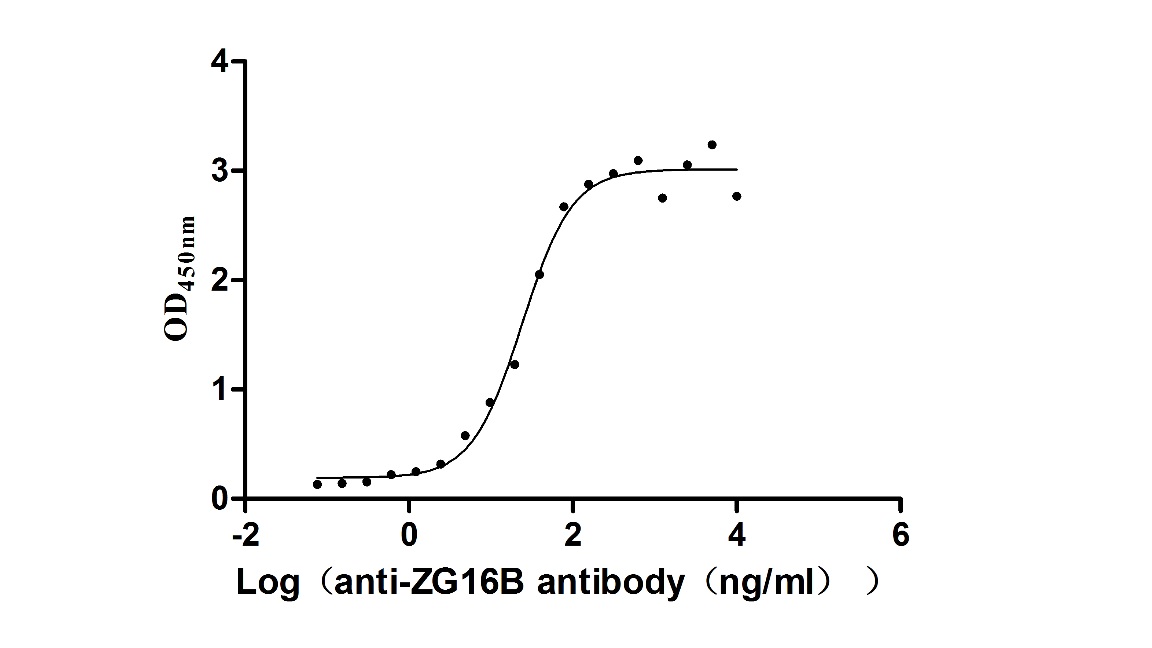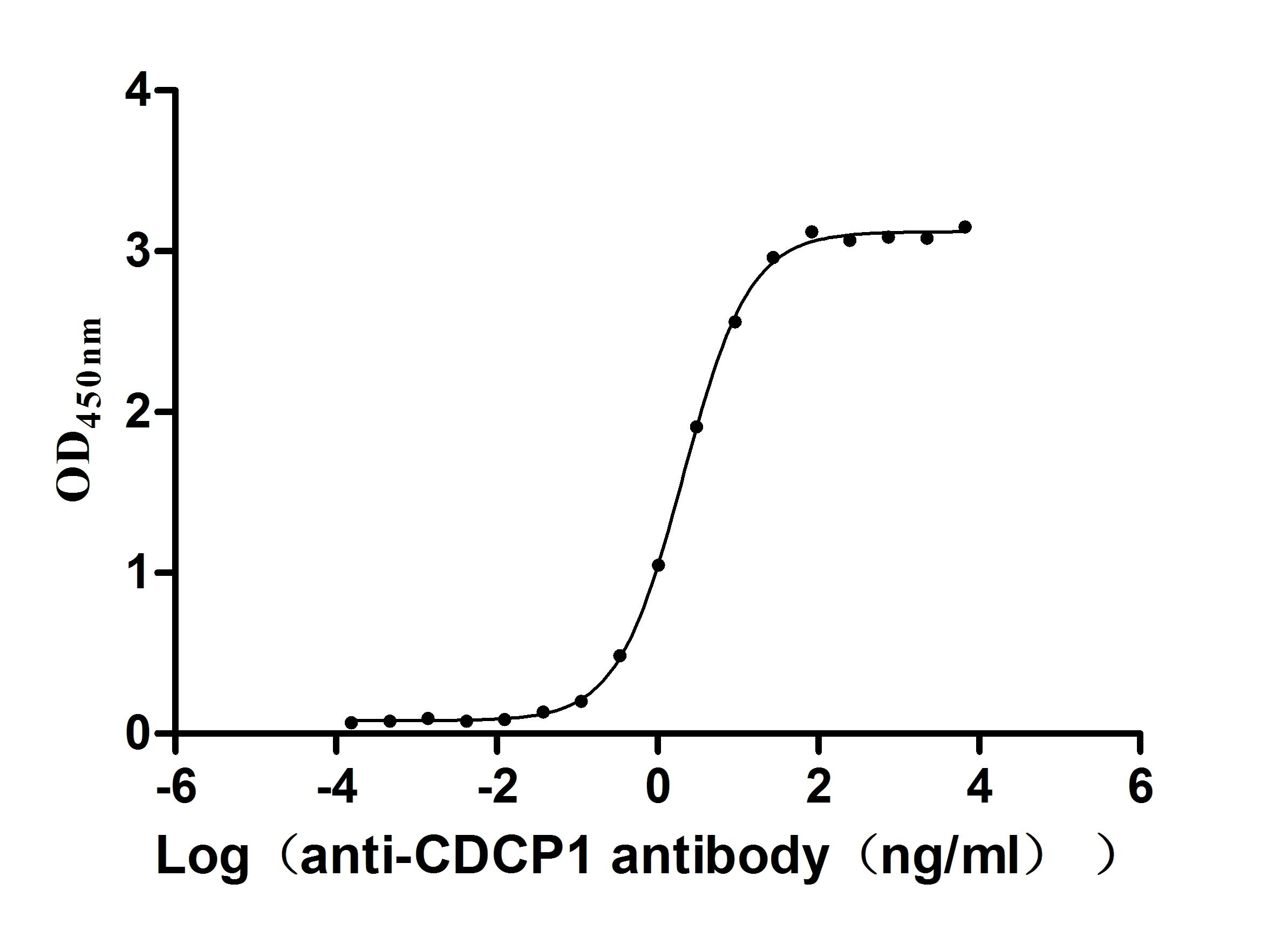Recombinant Human Probable hydrolase PNKD (PNKD)
-
货号:CSB-YP843154HU
-
规格:
-
来源:Yeast
-
其他:
-
货号:CSB-EP843154HU
-
规格:
-
来源:E.coli
-
其他:
-
货号:CSB-EP843154HU-B
-
规格:
-
来源:E.coli
-
共轭:Avi-tag Biotinylated
E. coli biotin ligase (BirA) is highly specific in covalently attaching biotin to the 15 amino acid AviTag peptide. This recombinant protein was biotinylated in vivo by AviTag-BirA technology, which method is BriA catalyzes amide linkage between the biotin and the specific lysine of the AviTag.
-
其他:
-
货号:CSB-BP843154HU
-
规格:
-
来源:Baculovirus
-
其他:
-
货号:CSB-MP843154HU
-
规格:
-
来源:Mammalian cell
-
其他:
产品详情
-
纯度:>85% (SDS-PAGE)
-
基因名:PNKD
-
Uniprot No.:
-
别名:2210013N15Rik; 2810403H05Rik; AI854243; BRAIN PROTEIN 17; BRP17; DYT8; FKSG19; FPD1; KIAA1184; KIPP1184; MNCb-5687; MR-1; MR1; Myofibrillogenesis regulator 1; Paroxysmal nonkinesiogenic dyskinesia protein; PDC; PKND1; Pnkd; PNKD_HUMAN; Probable hydrolase PNKD; TAHCCP2; Trans-activated by hepatitis C virus core protein 2
-
种属:Homo sapiens (Human)
-
蛋白长度:full length protein
-
表达区域:1-385
-
氨基酸序列MAAVVAATAL KGRGARNARV LRGILAGATA NKASHNRTRA LQSHSSPEGK EEPEPLSPEL EYIPRKRGKN PMKAVGLAWY SLYTRTWLGY LFYRQQLRRA RNRYPKGHSK TQPRLFNGVK VLPIPVLSDN YSYLIIDTQA QLAVAVDPSD PRAVQASIEK EGVTLVAILC THKHWDHSGG NRDLSRRHRD CRVYGSPQDG IPYLTHPLCH QDVVSVGRLQ IRALATPGHT QGHLVYLLDG EPYKGPSCLF SGDLLFLSGC GRTFEGNAET MLSSLDTVLG LGDDTLLWPG HEYAEENLGF AGVVEPENLA RERKMQWVQR QRLERKGTCP STLGEERSYN PFLRTHCLAL QEALGPGPGP TGDDDYSRAQ LLEELRRLKD MHKSK
-
蛋白标签:Tag type will be determined during the manufacturing process.
The tag type will be determined during production process. If you have specified tag type, please tell us and we will develop the specified tag preferentially. -
产品提供形式:Lyophilized powder
Note: We will preferentially ship the format that we have in stock, however, if you have any special requirement for the format, please remark your requirement when placing the order, we will prepare according to your demand. -
复溶:We recommend that this vial be briefly centrifuged prior to opening to bring the contents to the bottom. Please reconstitute protein in deionized sterile water to a concentration of 0.1-1.0 mg/mL.We recommend to add 5-50% of glycerol (final concentration) and aliquot for long-term storage at -20℃/-80℃. Our default final concentration of glycerol is 50%. Customers could use it as reference.
-
储存条件:Store at -20°C/-80°C upon receipt, aliquoting is necessary for mutiple use. Avoid repeated freeze-thaw cycles.
-
保质期:The shelf life is related to many factors, storage state, buffer ingredients, storage temperature and the stability of the protein itself.
Generally, the shelf life of liquid form is 6 months at -20°C/-80°C. The shelf life of lyophilized form is 12 months at -20°C/-80°C. -
货期:Delivery time may differ from different purchasing way or location, please kindly consult your local distributors for specific delivery time.Note: All of our proteins are default shipped with normal blue ice packs, if you request to ship with dry ice, please communicate with us in advance and extra fees will be charged.
-
注意事项:Repeated freezing and thawing is not recommended. Store working aliquots at 4°C for up to one week.
-
Datasheet :Please contact us to get it.
相关产品
靶点详情
-
功能:Probable hydrolase that plays an aggravative role in the development of cardiac hypertrophy via activation of the NF-kappa-B signaling pathway.
-
基因功能参考文献:
- The short isoform of the myofibrillogenesis regulator 1 (MR-1S) as a new COX assembly factor, which works with the highly conserved PET100 and PET117 chaperones to assist COX biogenesis in higher eukaryotes. PMID: 28199844
- The combined analysis identified a new risk association for colorectal cancer (CRC) at 2q35 marked by rs992157 which is intronic to PNKD and TMBIM1.Intriguingly this susceptibility single-nucleotide polymorphism (SNP) is in strong linkage disequilibrium (r(2) = 0.90, D' = 0.96) with the previously discovered GWAS SNP rs2382817 for inflammatory bowel disease (IBD). PMID: 27005424
- study highlights the frequency, novel mutations and clinical and molecular spectrum of PRRT2, SLC2A1 and PNKD mutations as well as the phenotype-genotype overlap among these paroxysmal movement disorders. PMID: 26598494
- This study present the pedigree is the first PNKD family from Chinese Mainland, which is also the largest PNKD family among those reported across the globe. It included 5 generations and 26 patients. PMID: 25107857
- MR-1 functions as a tumor promoter in MCF7 cells by activating the MEK/ERK signaling PMID: 25066297
- MR-1 overexpression was tightly associated with more aggressive tumor behavior and a poor prognosis in pancreatic ductal adenocarcinoma. PMID: 23696030
- MR-1 was up-regulated in gastric cancer tissues. High expression of MR-1 in gastric cancer was significantly correlated with clinical stage. Postoperative survival of the MR-1 positive group tended to be poorer than that of the MR-1 negative group. PMID: 23082061
- A Taiwanese family with paroxysmal nonkinesigenic dyskinesia has a heterozygous c.20 C>T (p.Ala7Val) mutation which was clearly segregated in the five affected patients. PMID: 22967746
- MR-1S is highly expressed in ovarian cancer cells and tissues. PMID: 22780969
- In this report we present two families with paroxysmal non-kinesigenic dyskinesia of Southern European origin carrying a PNKD protein recurrent mutation. PMID: 21962874
- Mutations in PNKD causing paroxysmal dyskinesia alters protein cleavage and stability. PMID: 21487022
- The pnkd mutation alters such a response, suggesting that a less flexible AC region may be more effective in coupling Ca(2+) binding to channel opening. PMID: 20620873
- MR-1 is a novel myofibrillogenesis regulator in human muscle PMID: 15188056
- Different missense mutations in exon 1 of MR1 that cosegregate with PNKD were identified in each multiplex family. These single-nucleotide mutations predicted substitution of valine for alanine in residue 7 in one family and residue 9 in the other. PMID: 15824259
- autosomal dominant paroxysmal nonkinesigenic dyskinesia seems to be a homogenous disorder, for which the MR-1 gene is the major disease gene. PMID: 16632198
- The Serbian family further demonstrates that recurrent MR-1 mutations are associated with paroxysmal nonkinesigenic dyskinesia. PMID: 16972263
- Following down-regulation of MR-1, the phosphorylations of MLC2, focal adhesion kinase (FAK), and Akt were dramatically decreased PMID: 18948272
- Our family was 1 of 8 families originally reported in which a mutation in the myofibrillogenesis regulator 1 (MR-1) gene caused the paroxysmal non-kinesigenic dyskinesia phenotype PMID: 18948699
显示更多
收起更多
-
相关疾病:Dystonia 8 (DYT8)
-
亚细胞定位:[Isoform 1]: Membrane; Peripheral membrane protein.; [Isoform 2]: Cytoplasm. Nucleus.; [Isoform 3]: Mitochondrion.
-
蛋白家族:Metallo-beta-lactamase superfamily, Glyoxalase II family
-
组织特异性:Isoform 1 is only expressed in the brain. Isoform 2 is ubiquitously detected with highest expression in skeletal muscle and detected in myocardial myofibrils. Variant Val-7 and Val-9 are detected in the brain only.
-
数据库链接:
HGNC: 9153
OMIM: 118800
KEGG: hsa:25953
STRING: 9606.ENSP00000273077
UniGene: Hs.98475
Most popular with customers
-
Recombinant Mouse Claudin-18 (Cldn18)-VLPs (Active)
Express system: Mammalian cell
Species: Mus musculus (Mouse)
-
Recombinant Human Claudin-3 (CLDN3)-VLPs (Active)
Express system: Mammalian cell
Species: Homo sapiens (Human)
-
Recombinant Macaca fascicularis zymogen granule protein 16 homolog B (ZG16B) (Active)
Express system: Mammalian cell
Species: Macaca fascicularis (Crab-eating macaque) (Cynomolgus monkey)
-
Recombinant Macaca fascicularis CUB domain containing protein 1 (CDCP1), partial (Active)
Express system: Mammalian cell
Species: Macaca fascicularis (Crab-eating macaque) (Cynomolgus monkey)
-
Recombinant Human Carcinoembryonic antigen-related cell adhesion molecule 8(CEACAM8) (Active)
Express system: Mammalian cell
Species: Homo sapiens (Human)
-
Recombinant Human Cadherin-6(CDH6),partial (Active)
Express system: Mammalian cell
Species: Homo sapiens (Human)
-
Recombinant Human C-C chemokine receptor type 9 (CCR9)-VLPs (Active)
Express system: Mammalian cell
Species: Homo sapiens (Human)
-
Express system: Mammalian cell
Species: Homo sapiens (Human)


-AC1.jpg)

















